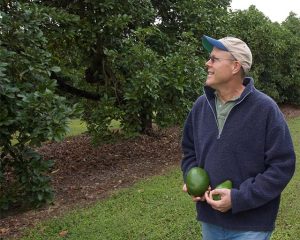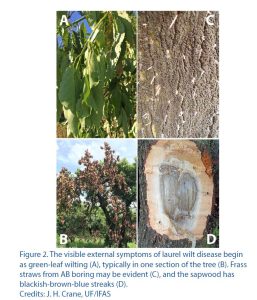
There is no shortage of consumer appetite for avocados. Frequently incorporated into starters and desserts, demand for avocados has surged in popularity to rival the iconic American apple pie.
Meanwhile, production of avocado in the United States is under constant threat from diseases like Laurel wilt (LW) and Phytophthora root rot (PRR), which can devastate orchards if left unchecked. While extensive research has been conducted, there is still much to learn about how growers make decisions regarding disease management and the economic costs and benefits of various management options.
Recognizing the urgent need for comprehensive insights, University of Florida scientists are collaborating in a groundbreaking multi-state LW and PRR survey initiative. The survey aims to gather critical data on grower decision-making, economic implications, and management strategies. By understanding these dynamics, researchers aim to develop rational and sustainable disease management strategies tailored to each state’s unique circumstances.
The researchers seek input from avocado growers, industry stakeholders, and research institutions across the U.S.
The multi-state researcher group includes UF’s Institute of Food and Agricultural Sciences, University of California Riverside, University of California Davis, University of Hawaii and Texas A&M University.
“It is important for all avocado industry members, growers, packers, shippers, etc. participate in the survey to capture their past and present strategies to deal with these two devastating fungal pathogens which threaten avocado production,” said Jonathan Crane, a UF/IFAS professor of horticultural sciences and Extension tropical fruit specialist stationed at UF/IFAS Tropical Research and Education Center (TREC) in Homestead. “The information garnered from this survey will assist current efforts and inform future efforts at responding to invasive pests that threaten agricultural production.”
The U.S. avocado industry is an economically important crop for multiple states in the southeastern U.S. Most of the avocado production in the U.S. is contributed by California, with Florida and Hawaii following suit. With a total national production of 149,600 tons in 2021, the industry reached a value of $341.9 million, according to the U.S. Department of Agriculture National Agricultural Statistics Service (USDA NAAS).
LW is an invasive, lethal disease in the southeastern United States spread by a fungus transmitted by the ambrosia beetle. The disease wilts and then browns tree leaves, killing entire trees in only a few weeks.
 Detected in Georgia in 2002, laurel wilt’s devastating effects were observed for the first time in a Florida commercial avocado grove in 2012. Little was known about the disease and the ambrosia beetle that transmits it. Since 2003, it has killed millions of native forest trees and has impacted commercial avocado production in South Florida.
Detected in Georgia in 2002, laurel wilt’s devastating effects were observed for the first time in a Florida commercial avocado grove in 2012. Little was known about the disease and the ambrosia beetle that transmits it. Since 2003, it has killed millions of native forest trees and has impacted commercial avocado production in South Florida.
PRR induces root decay in avocado trees that leads to tree mortality if not treated. Excessive water intensifies the susceptibility of plants to PRR. While this has not posed a significant issue in South Florida yet thanks to the presence of limestone soils and effective drainage systems. However, a key objective of the Everglades restoration project involves elevating the water table to rejuvenate water flow within Everglades National Park.
The survey will be available until May 31, 2024.
###
By Lourdes Mederos, rodriguezl@ufl.edu
ABOUT UF/IFAS
The mission of the University of Florida Institute of Food and Agricultural Sciences (UF/IFAS) is to develop knowledge relevant to agricultural, human and natural resources and to make that knowledge available to sustain and enhance the quality of human life. With more than a dozen research facilities, 67 county Extension offices, and award-winning students and faculty in the UF College of Agricultural and Life Sciences, UF/IFAS brings science-based solutions to the state’s agricultural and natural resources industries, and all Florida residents.
WHY FOOD IS OUR MIDDLE NAME
Feeding a hungry world takes effort. Nearly everything we do comes back to food: from growing it and getting it to consumers, to conserving natural resources and supporting agricultural efforts. Explore all the reasons why at ifas.ufl.edu/food or follow #FoodIsOurMiddleName.
 0
0
